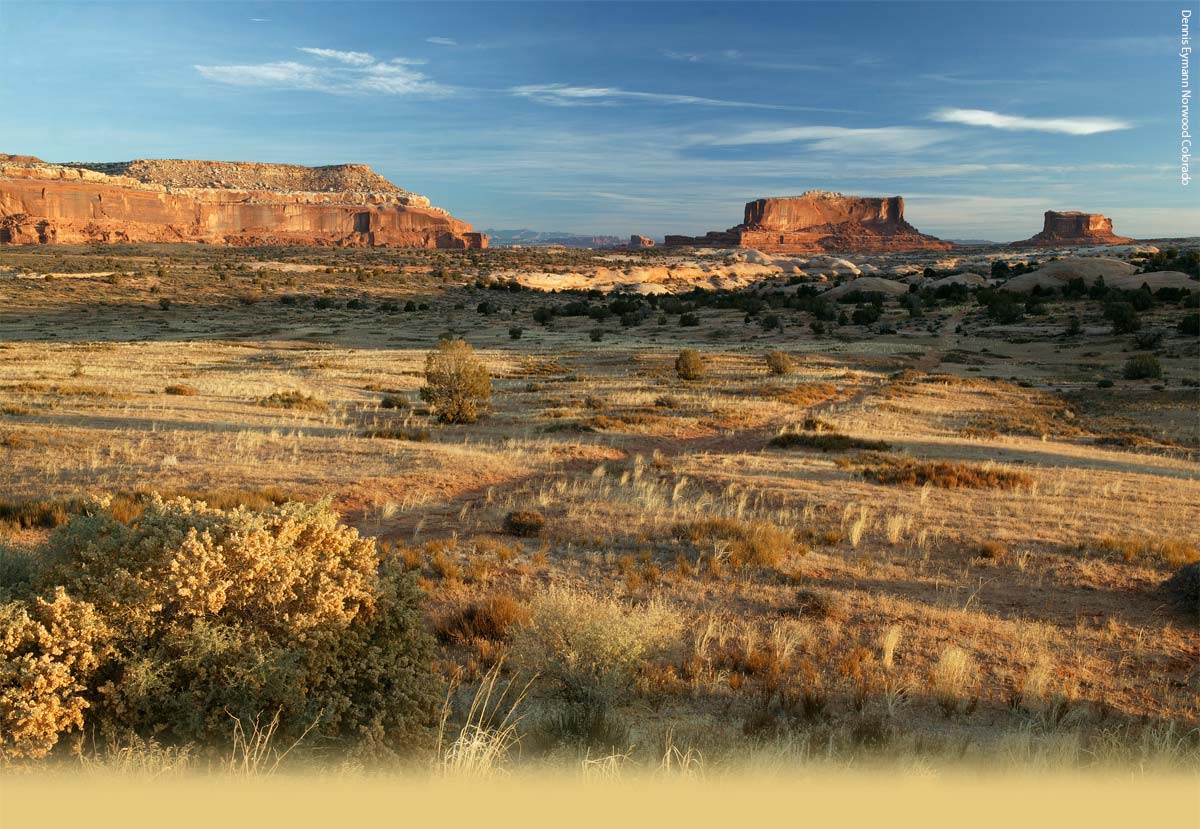San Miguel River: 48 feet of the historic hanging flume has been restored
San Miguel River: 48 feet of the historic hanging flume has been restored
Click on the thumbnail graphic to the right for an aerial shot of the San Miguel River canyon. The hanging flume, before the restoration, is along the cliff wall in the middle of the photo. Here’s a report from Dann Cianca writing for KJCT8.com. Click through for his video report with shots of the reconstruction. Here’s an excerpt:
“It’s a work of art, it really is,” said Kent Diebolt, team leader from Vertical Access, a company working to reconstruct part of the flume.
The Hanging Flume was built between 1889-1891 to assist in gold mining operations. Located in the canyon carved by the San Miguel River just before it meets the Dolores River, the flume was a canal of sorts to transfer water to the gold mining operations. The miners used the the water, assisted by gravity to separate gold from other minerals. The waterway stretched for ten miles along the San Miguel River and existed in part as a ditch but also as a hanging wooden trough, known as a flume. While the miners found gold, after a few years of mining, it was realized that the operation was not economical. Eventually, the flume was no longer being used and its pieces were scavenged.
“The flume was built with about 1.8 million board feet of timber and people would walk through the flume box and dismantle the side boards and the floor boards and that ended up in some of the communities around this area,” said project manager Ron Anthony.
For years afterward, the flume sat untouched, slowly being weathered by the environment until people realized that it should be preserved. Since then, groups have come together to discover the history of the flume and protect it. Thanks to private donations by the JM Kaplan Fund, the Hendricks Foundation and more along with the support of the BLM and Western Colorado Interpretive Association, part of the original flume is being reconstructed.
“This effort on this project is to reconstruct a segment about forty eight feet long that has the flume box, (the floor boards and side boards) that will allow people to see from below what was here when the flume was operational,” Anthony said.
Builders are using the same type of timber to reconstruct the flume as well as some of the original methods. But it takes a special type of worker to take part in the project. The flume is suspended half-way up a two hundred foot cliff! Builders have to repel into work, not to mention the effort it takes to make sure building supplies can get to where they need to be.
Click here for a photo gallery from HangingFlume.org.
More coverage from The Denver Post (Nancy Lofholm):
Those who keep returning to measure, survey, photograph and examine the mysterious structure known as the Hanging Flume call it “flume fever.” The afflicted wake in the middle of the night to puzzle over how enterprising but misguided gold seekers pinned a 10-mile-long wooden water chute to a sheer cliff to create a hydraulic gold separator.
They spend years in faraway city offices calculating angles and load factors and building mini models.
Finally, on this blustery week, about a dozen of them — engineers, scientists, archaeologists, industrial riggers, carpenters and historians — gathered at a cliff edge that locals like to say is “50 miles from nowhere” to remake history.
“The fascination with this thing is beyond belief. It’s a window into the way people thought in those days,” said Bureau of Land Management archaeologist Glade Hadden.

